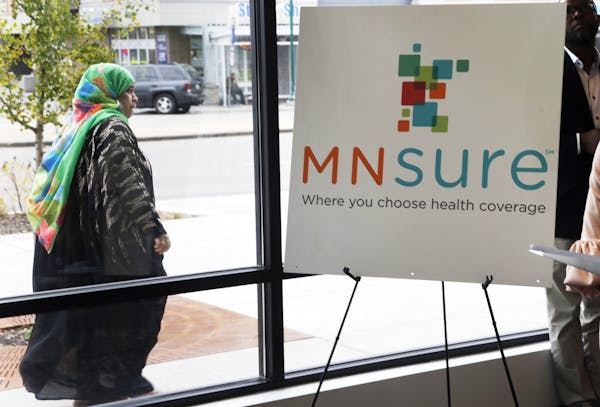Hospitalizations for COVID-19 have risen in Minnesota so far this week, offering a reminder that the pandemic remains a threat despite gradual declines in daily cases and deaths over the past month.
The Minnesota Department of Health on Wednesday reported that 340 people were hospitalized for COVID-19, a respiratory disease caused by a novel coronavirus, and that 160 needed intensive care. That is up from the 322 hospitalized cases reported on Sunday, but well below the state's May 28 peak of 606.
The state on Wednesday also reported 5 deaths and 304 newly-diagnosed COVID-19 cases, bringing the totals so far in the pandemic to 1,397 deaths and 33,763 known cases. Among the deaths, 1,102 involve residents of long-term care or assisted-living facilities, who are at heightened risk of severe COVID-19 due to their ages or underlying health conditions such as diabetes, asthma and diseases of the lungs, heart and kidneys.
Minnesotans 70 and older make up 12% of known cases and 82% of deaths, whereas Minnesotans 40 and younger make up 66% of known cases but 2% of deaths. Among 12 deaths of people 30 and younger, most but not all, had underlying health conditions.
Research at the University of Minnesota and other institutions has found obesity to be a risk factor for more severe infections. A state health analysis of the first 2,428 hospitalizations for COVID-19 found that 35% involved patients who were obese, which is slightly higher than the overall obesity rate in the state of 30%.
The state reported that 9,547 diagnostic tests for COVID-19 were processed Tuesday, reflecting the continued growth in testing due to stable supplies of testing and collection kits. The state is scheduling facility-wide testing of residents and staff in long-term care facilities with outbreaks, and has recommended testing for anyone involved in the protests following the May 25 death of George Floyd due to their exposure risks in these mass events.
Restrictions designed to reduce face-to-face contact and slow the spread of the virus have been eased over the past month, starting with the end of a statewide stay-at-home order after 51 days on May 18.
Health officials are watching daily COVID-19 numbers to see if the relaxed restrictions result in any increases in infections. The impact of the June 10 reopening of indoor restaurants, entertainment venues and fitness clubs at limited capacities won't be known for another week because of the incubation cycle of the coronavirus.
The latest change starts today with the allowance of outdoor youth sports scrimmages and games.

Lakewood Cemetery in Minneapolis opens new Welcome Center
Man killed in domestic incident in Coon Rapids, Sheriff's Office says

U of M's interim president meets with pro-Palestinian protest leaders

Legendary boys hockey coach Randolph loses his job

